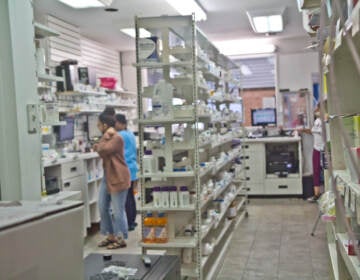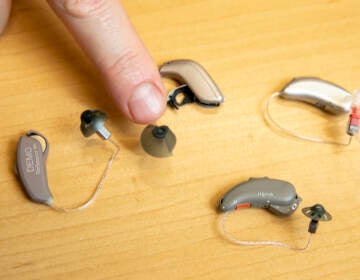What’s behind the new trend of “stem cell” microneedling?
A new microneedling technique utilizes a solution based on human stem cells to increase the treatment’s effect. WHYY’s host of The Pulse, Maiken Scott, gave it a try.

The Pulse host Maiken Scott receives a microneedling treatment based on stem cells that's designed to stimulate collagen and elastin production in the skin. (Courtesy of Maiken Scott)
This story is from The Pulse, a weekly health and science podcast.
Find it on Apple Podcasts, Spotify, or wherever you get your podcasts.
About 90 percent of my Instagram feed these days is skin care products, which is probably a monster of my own making since I’m fascinated by skin care. I can’t help but click on ads for the latest creams, serums, or potions that promise to erase years off my face.
I’ve been interested in skin care for a long time, at least ever since I started to notice the first signs of aging, under my eyes, on my forehead, the gentle, general sag that can make me feel old and tired.
But it seems like new treatments are coming out every day – treatments that speak directly to all of my skin worries. And when I heard about a new version of microneedling recently, which uses a stem-cell-based solution in the process, I was intrigued!
Microneedling is a procedure where the skin is punctured with tiny holes, to stimulate collagen and elastin production, both are proteins that keep your skin looking supple. Microneedling techniques keep advancing. For example, one version utilizes platelet-rich plasma to boost the effect. It’s become known as the vampire facial.
“Now, stem cells are the next best thing,” says Akis Ntonos, a family nurse practitioner who specializes in aesthetic dermatology.
He is the co-founder of Aion Aesthetics, a boutique clinic on New York City’s Upper East Side.
I’ve come here to give this stem cell-based treatment a try. Ntonos first asks me a few questions: about allergies, and if I have ever tried this before — which I have not.
He tells me I’m going to be red afterwards, like a bad sunburn. I hadn’t really thought about that, but he assures me it will subside within a few days.
Ntonos first spreads a numbing cream on my face, then we have to wait for about half an hour.
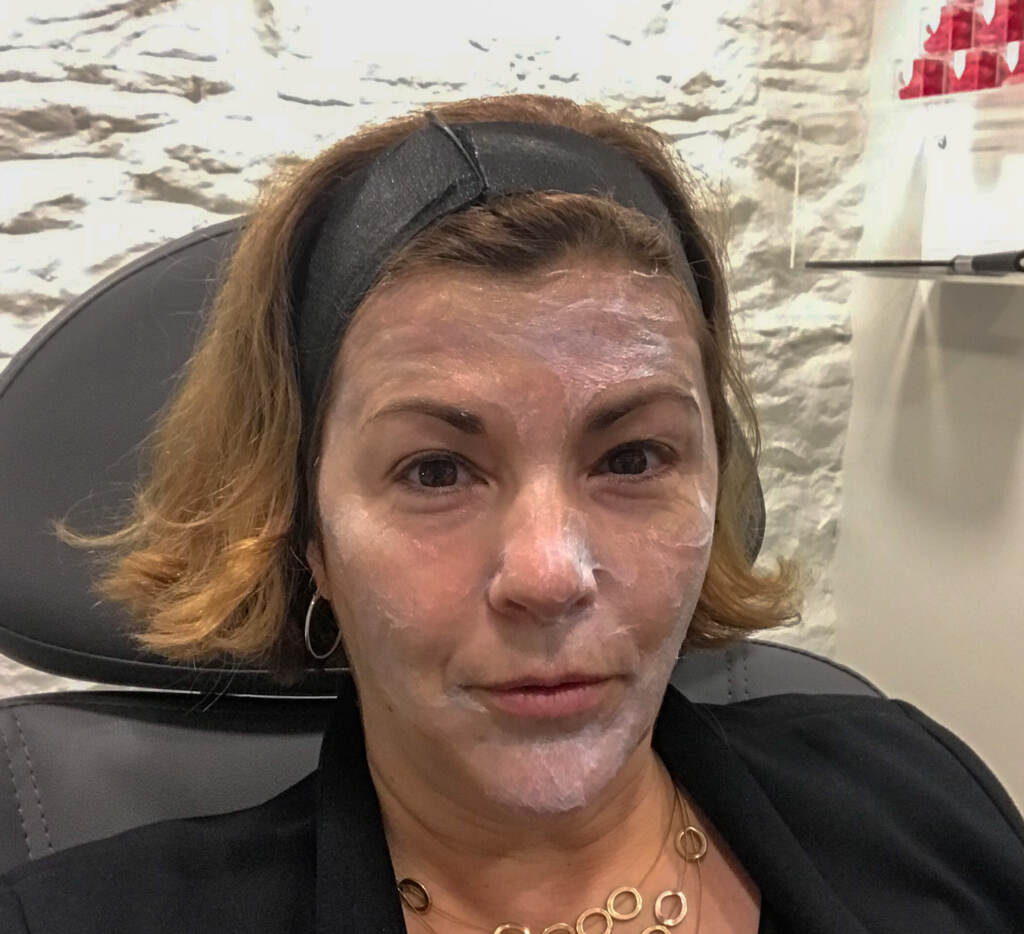
What’s really in this vial?
I’m relaxing in my chair and my face begins to tingle. I’m looking at the treatment I’m about to receive, which is stored in a small vial. It’s not actual, live cells in there – but the process of creating it does involve human bone marrow stem cells. The company that makes this product, AnteAGE, procures donated cells, then grows and multiplies them in their lab.
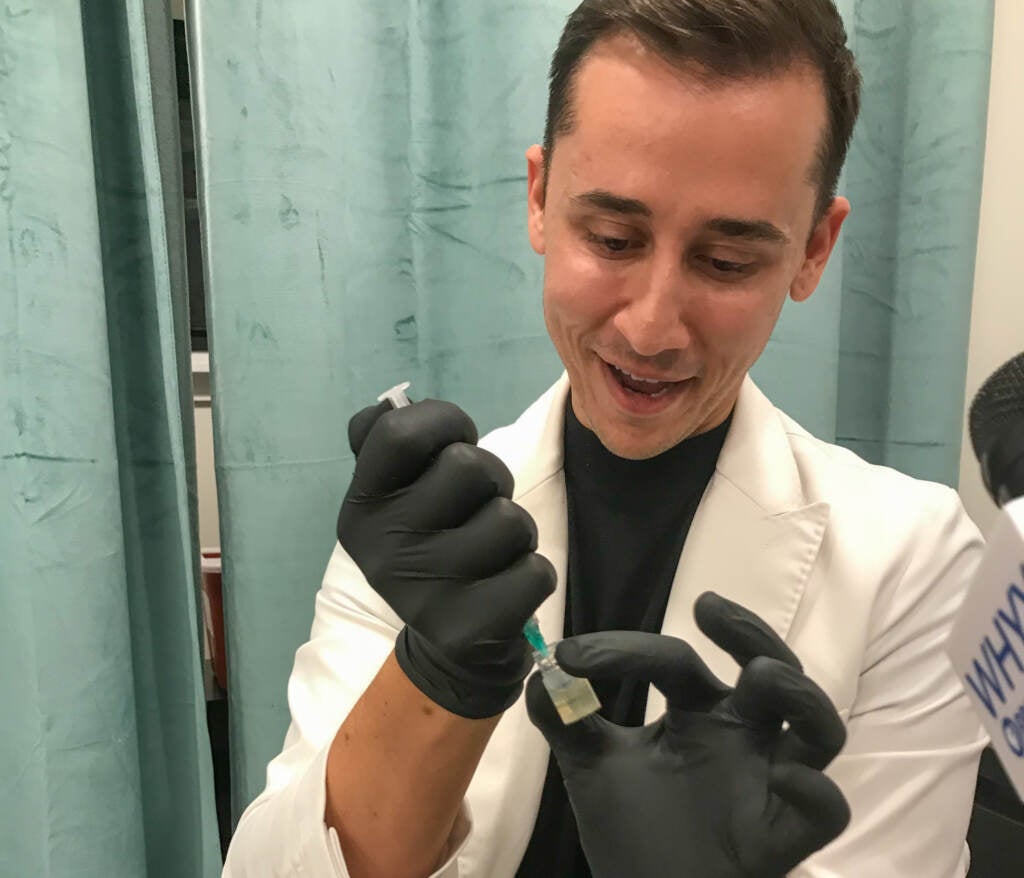
“What we have in our products is stem cell conditioned media,” says Rob Knight, AnteAGE chief scientist. “We grow the cells in the lab and during this culture they secrete all of their regenerative proteins, growth factors, exosomes into the surrounding media. We can then collect this conditioned media that contains all the active ingredients the cells are producing.”
Subscribe to The Pulse
Knight sees a lot of promise in utilizing stem cells in skin care. “Stem cells are really great because they have a nice capacity to regenerate,” he explains. “So, when your tissue is normally just turning over and growing and cells are dying just as the normal process of life, the new cells and new tissue is regenerated from stem cells.”
Knight said the stem cells can stimulate collagen production, and they have anti-inflammatory properties. He has worked with stem cells as a scientist for over a decade – using them for the treatment of scars.
“So, it’s really just taking the research and the information people have been getting from drug discovery and regenerative therapies and then applying that research to the cosmetic esthetic market.”
Pins and needles
My face has been numbing for about 30 minutes. Ntonos comes back into my treatment room. He’s going to use a device called a SkinPen — which looks a bit like a cross between a vape and an electric toothbrush. It will puncture those tiny holes into my skin, all while working little drops of the stem cell solution into my face.
My face is blissfully numb, and the treatment feels completely fine. My hairline is a bit more sensitive, and when Ntonos needles the side of the nose. It tickles and creates a strange sensation that brings tears to my eyes. That’s it. Fifteen minutes later, I’m done!
Ntonos is pleased with the results and says I’m much less red than he thought I would be. He instructs me to not wash my face until the next day — to allow the treatment to really work.
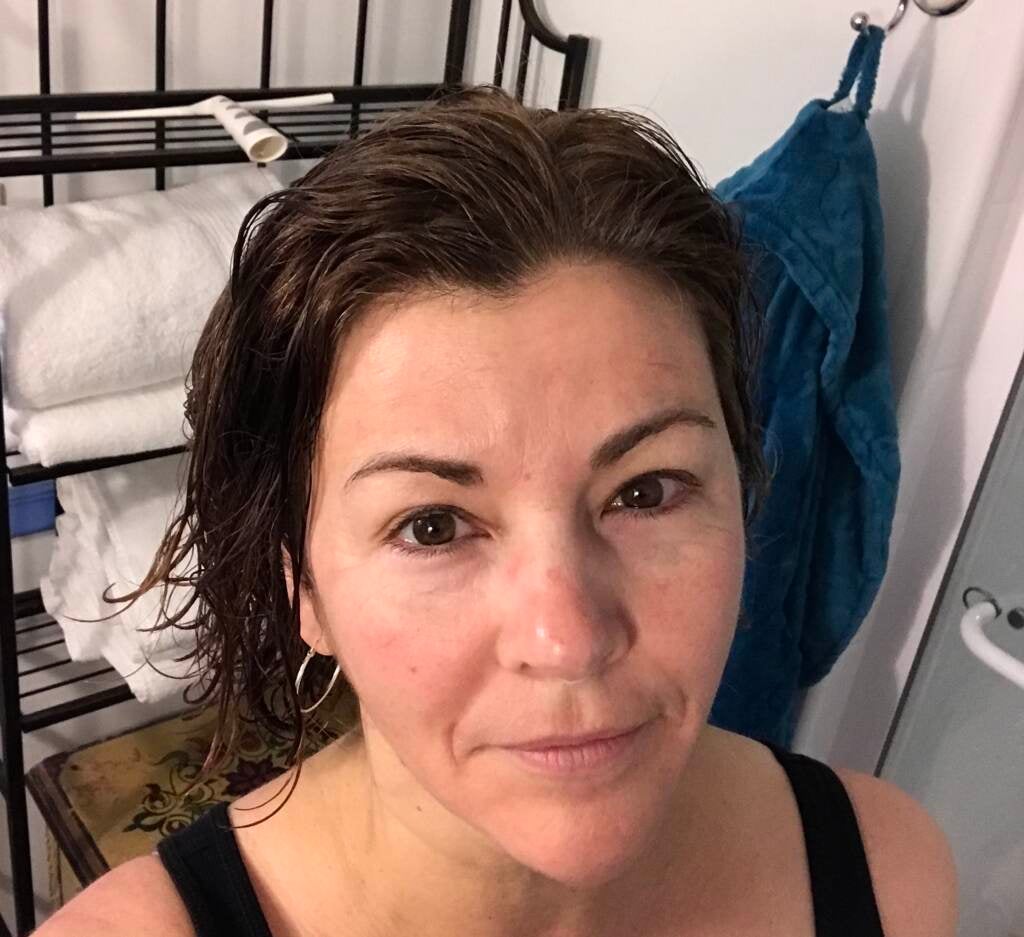
My face now feels a bit sticky and stiff, and I’m grateful to be wearing a mask on the train ride home. The next day, the redness had already subsided and the day after — it was almost gone.
Now, a few weeks later, my skin definitely has a nice glow to it — and the tone is even. I can’t tell if I see any reductions in lines or wrinkles — but then again, it’s hard to keep track of them all these days. Also, this is the kind of treatment you are supposed to do every few months to see real results.
AnteAGE chief scientist Rob Knight says these treatments will continue to get more effective, as scientists focus specifically on stem cells exosomes, which they believe could harness even more regenerative power.
WHYY is your source for fact-based, in-depth journalism and information. As a nonprofit organization, we rely on financial support from readers like you. Please give today.






